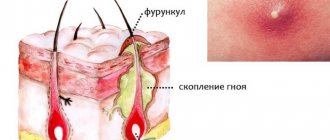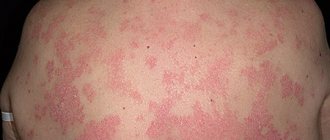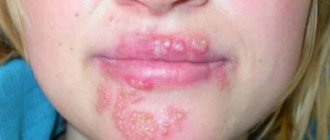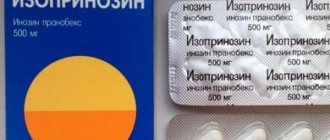What to eat for herpes
Food for herpes
What could herpes and diet have in common? At first glance it seems like nothing, but it’s not.
It turns out that scientists have proven a direct connection - the less agrinin comes from food, the lower the likelihood of exacerbation of herpes.
Anyone reading these lines may object and think that the author is an inventor, but scientific nutritionists have already proven the direct dependence of relief from herpes on the consumption of certain foods.
A diet for herpes is not just nutrition, it is a whole system, following which you can significantly suppress the activity of the virus and thereby ease the course of the disease.
What does the body need with herpes?
With food, agrinin enters the body - an amino acid that promotes the functioning of the herpes virus. Arginine is opposed by the amino acid lysine - it is part of all proteins.
Indispensable for the production of hormones, enzymes, antibodies, restoration and formation of various tissues.
Consuming enough lysine allows you to feel better during illness and forget about herpes and other skin problems for a long time.
In order to prolong the period between relapses, the diet for herpes must include as many foods as possible containing lysine.
The requirement during a relapse of herpes increases to 1200 mg per day.
If you have no appetite or are unable to take certain foods, there is a special drug (supplement) in capsules.
It can be taken during illness, but only on the recommendation of a doctor.
Principles of therapeutic nutrition ↑
Complex therapy for herpes, regardless of its specificity, necessarily includes dietary restrictions. When choosing a diet, the doctor is guided by three basic principles:
- balance – daily intake of proteins, fats and carbohydrates (mostly complex) meets the body’s needs, the patient consumes the required amount of microelements;
- good digestibility - products that cause stress on the liver and gastrointestinal tract are excluded;
- prohibition of foods that provoke relapses and complications: sugar, any alcohol.
Since treatment of herpes often accompanies the use of antibiotics, doctors always prescribe fermented milk products to normalize the microflora.
Research has shown that viral infections can be stopped by foods containing lysine. This amino acid restores damaged tissue, improves human hormonal levels, and promotes the production of antibodies that suppress infection. Lysine is found in meat, fish, milk and eggs.
But a large amount of an amino acid such as arginine can trigger the appearance of herpes. Therefore, it is necessary to refrain from eating raisins, nuts, chocolate, seeds, and gelatin. If a person is predisposed to the appearance of herpes, the risk of the disease increases with an increased content of this amino acid in the body.
Do you follow a diet during an exacerbation of herpes?
Yes, it helps No, I think it’s useless
Both of these amino acids are present in many foods. Therefore, it is important to know the rules of nutrition during the onset of infection. This will reduce the frequency of relapses and shorten periods of exacerbation. Proper nutrition during the disease helps to weaken the manifestations of herpes and the rapid onset of remission, if you follow its basic principles:
- nutrition should be balanced;
- it is necessary to consume proteins, carbohydrates and fats, which help improve immunity;
- Smoked, fried, salty and spicy foods should be excluded from the diet;
- it is necessary to abandon marinades and canned foods;
- avoid eating sweets, chocolate and baked goods;
- You need to consume fermented milk products every day;
- first courses are cooked in vegetable broths;
- It is recommended to eat rye, bran, and whole grain bread.
We suggest you familiarize yourself with Herpes on the lip of a one-year-old child: how to treat it
What foods contain lysine?
In first place in terms of content is calf and rabbit meat, soy, and fish.
Enough lysine to resist the virus is found in nuts, milk, and cereals. But the content in beets, cabbage and carrots is insignificant.
One standard serving of meat contains one and a half times the daily intake. That is why, for a quick recovery and boosting immunity, it is recommended to consume meat products.
The table gives a general idea of the amino acid content of foods and provides g/day consumption data for a person with an average weight of 70 kg.
In addition to the products listed in the table, it is very useful to eat seafood - shrimp and squid, seaweed, sea fish.
Maintaining water balance
It is very important to maintain the body's water balance when signs of a herpes infection appear. It is known that water actively removes the waste products of the virus - toxins.
Drink as much pure water and herbal teas as possible. The following are good for healing tea: chamomile, mint, oregano.
Rosehip decoction will give you strength, saturate the body with vitamins and help remove harmful substances, because has a mild diuretic effect.
Prepare the decoction in a thermos - take 2 tablespoons of dry berries for 1 liter of boiling water. This infusion is drunk 1/3 cup throughout the day.
Help from vitamins
In addition to following a diet and eating certain foods, it is important to support yourself with vitamins and minerals. The most important thing should be the consumption of vitamin C in a daily dose of up to 100 mg.
For the treatment of herpes, it is important to use it in conjunction with vitamin B 12. The use of tandem is recommended for 3 days, 3 times a day. Vitamin C is found in large quantities in currants, lemon, onions, and garlic.
In addition to these vitamins, taking other complexes will not harm and will help the body cope with the infection faster:
- Vitamin P - will prevent herpetic rashes.
- Vitamin E will reduce pain and help heal wounds and ulcers. Contained in greens, vegetables, vegetable oils.
- Zinc has a positive effect on the condition of the skin in general. Large amounts are found in seafood, seeds, bran and beef liver.
Nutrition for herpes
Herpes zoster how to eat
Proper nutrition for shingles (herpes) is an important part of the fight against this disease.
A well-designed treatment menu helps to increase the effectiveness of drug therapy, improves the healing process of skin affected by the virus, strengthens the body's defenses and prevents the development of relapses of the disease.
To achieve a quick recovery, a diet for shingles must be followed from the moment the first signs of the disease appear.
The role of lysine, vitamins C and E in the treatment of infection
Patients suffering from herpes zoster, during the period of activation of the disease, need to consume large quantities of foods that contain lysine, an amino acid that takes part in maintaining many vital functions of the body and suppresses the activity of the varicella-zoster virus, which is the causative agent of this type of herpes. It is the lack of lysine in the body that leads to frequent exacerbations of the disease. To compensate for the deficiency of this amino acid, the patient needs to include chicken and quail eggs, red meats, chicken, turkey, sardines and cod in his diet. Rich sources of lysine are also milk, yogurt, cottage cheese, feta cheese and hard cheeses. Among plant products, the most lysine is found in soybeans, beans, peas and spinach.
The spread of the herpes virus is prevented by foods rich in vitamin A.
In addition to lysine, it is recommended to include foods containing vitamin C (ascorbic acid) in the daily menu for herpes zoster. It stimulates the production of interferon, a substance that increases the human body’s resistance to the varicella-zoster virus.
In addition, ascorbic acid improves skin regeneration, reduces the intensity of itching and pain in infected areas of the body.
To maintain optimal levels of vitamin C in the body, the patient needs to regularly consume black currants, sea buckthorn, rose hips, citrus fruits, young peas, red peppers, Brussels sprouts, and wheat germ.
Vitamin E plays an important role in the treatment of shingles. It has antiviral properties, strengthens the immune system, reduces the severity of painful manifestations on the affected skin and improves its ability to recover.
In order not to experience a lack of vitamin E, the patient needs to include in the diet spinach, carrots, nuts (peanuts, almonds, cashews, hazelnuts), seeds (pumpkin and sunflower), dried fruits (prunes, raisins and dried apricots), vegetable oils, veal liver , chicken egg yolks.
Eating sources of vitamin A, cyanocobalamin, zinc and quercetin
Vitamin A (retinol) stops the spread of the virus in the body, reduces the external manifestations of herpes zoster and reduces the likelihood of relapses after recovery. Carrots, zucchini, tomatoes, persimmons, dried apricots, peaches and plums will help ensure the body receives this vitamin.
Proper nutrition for shingles is an important part of the fight against this disease.
To make shingles go away faster, the patient needs to diversify his diet with foods containing vitamin B12 (cyanocobalamin). The richest source of this vitamin is liver (beef, pork and chicken). Cyanocobalamin is present in mackerel, sardines, sea bass, cod, beef, rabbit, pork and lamb.
When creating a diet for shingles for adults and young patients, you need to remember zinc. This important trace element suppresses the activity of the virus, strengthens the immune system and reduces the frequency of relapses of the disease. Oysters, wheat bran, beef, pork and chicken liver, pumpkin seeds, flax and sesame seeds, pine nuts, ginger will help saturate the body with zinc.
The bioflavonoid quercetin plays an important role in the fight against herpes zoster. It accelerates the healing of infected areas of the body due to its antioxidant effect.
Quercetin is found in plant products of predominantly red and purple shades (cranberries, raspberries, blueberries, sea buckthorn, dark cherries, apples, red onions, tomatoes, buckwheat).
Green tea leaves, garlic, and olive oil are also sources of bioflavonoid.
Drinking plenty of fluids removes viruses from the body. Drink up to 2 liters of water per day
Drinking regime during illness, prohibited foods
When including foods that help suppress the activity of varicella zoster in the diet, the patient needs to remember the drinking regime.
Drinking plenty of fluids helps clear the virus from the body and speeds up recovery.
During this period, preference should be given to bottled water, green tea and rosehip infusion. The total volume of liquid drunk by the patient per day should reach 2 liters.
The diet for shingles involves excluding from the diet foods that reduce the body's resistance to viruses. These products include:
- fried, fatty and salty foods;
- offal (except liver);
- meat and fish of fatty varieties;
- rich broths;
- conservation;
- smoked meats;
- sauces;
- sweets;
- fast food;
- black and red pepper;
- horseradish.
Source: https://angelina-tihonova.ru/opojasyvajushhij-gerpes-kak-pitatsja/
Approximate daily diet
In order for the diet to be balanced for herpes, the daily diet should include: fresh vegetables and fruits, mso veal, lean pork, rabbit (protein), vegetable oils (any). Drink up to 2 liters of clean water during the day.
A sample menu for the day might look like this:
- Breakfast – a glass of water or herbal decoction, a sandwich with cheese.
- Second breakfast – a glass of kefir or yogurt.
- Lunch – fish soup or fish soup, vegetable stew, glass of fruit drink.
- Afternoon snack – fruit.
- Dinner – steamed potatoes with meat, vegetable salad with sunflower oil.
A gentle diet for shingles
› Diseases › Why does shingles occur and how does it manifest itself ›
With the help of diet, routine and proper nutrition, you can improve your health with shingles. When consuming approved foods, the immune system is strengthened. This helps get rid of pathogenic bacteria and is an effective prevention.
With the help of diet, routine and proper nutrition, you can improve your health with shingles.
General rules
Lichen, or herpes zoster, is classified as a dermatoses caused by a type 3 virus. Some diseases of this type are recurrent in nature.
This occurs due to digestive disorders, decreased protective functions of the body, poor metabolism and a predisposition to infectious diseases.
Therefore, it is necessary to consume foods that are part of a gentle diet and follow the following rules:
- The diet should be balanced. Food should contain fats, proteins, carbohydrates, vitamins and microelements, the consumption of which improves the functioning of the body's immune system.
- If the patient often experiences constipation, then it is necessary to restore normal intestinal function and eliminate flatulence.
- Dishes must be prepared from fresh and natural products without adding flavorings, flavor enhancers or preservatives.
- Nutrition should not negatively affect liver function. When pathologies of the organ and biliary tract are identified, it is necessary to undergo an additional course of treatment.
- The diet should contain fermented milk products with bifidobacteria.
- In case of dermatoses, alcohol should be excluded, as it adversely affects the functioning of the liver, weakens the immune system and worsens the course of the disease.
Nutrition for herpes zoster in adults has a number of features that the patient should know so as not to harm the body.
Authorized Products
Foods consumed for herpesvirus should be baked, stewed or steamed. The patient can use:
- vegetable and butter;
- cabbage;
- fermented milk products;
- fruits;
- green vegetables;
- broths;
- legumes and grains;
- bread made from rye flour;
- lean meat;
- eggs;
- fish;
- soups with the addition of vegetables and cereals.
The supply of vitamins can be replenished with blackcurrant decoction.
The supply of vitamins can be replenished with a decoction of black currants, rose hips and rowan. Lettuce, broccoli and cucumbers contain a small amount of nitrogenous substances, but they are rich in potassium, and therefore help remove toxins and waste from the body.
A limited amount of easily digestible carbohydrates should be supplied at this time, as they worsen the patient’s condition. Honey can be used instead of sugar. Compote is prepared from dried apricots and prunes. The patient's drinks should include mineral water.
The bioflavonoid quercetin plays an important role in the treatment of skin diseases, accelerating the healing of affected skin areas. It is found in products of plant origin.
A person suffering from shingles can consume olive and vegetable oils, honey, prunes, seeds, eggs, squid, beets and wheat germ, which are antioxidants and help improve metabolic processes, normalize intestinal function and remove toxins and waste from the body.
Prohibited Products
If you have skin rashes, you should avoid eating fatty pork, solid fats, foods high in essential oils, spicy foods, and spinach. It is not recommended to drink strong tea and coffee, or alcoholic beverages. Patients should avoid spicy foods with seasonings and spices, as well as pickled and salty foods. Red meat and fatty fish are on the list of prohibited foods.
A person suffering from shingles can consume olive and vegetable oils, which normalize intestinal function and remove toxins and waste from the body.
Sample menu for the day
To cleanse the skin of herpes zoster rashes and improve the functioning of internal organs, you can use the following daily menu:
- for breakfast you can make toast from whole grain bread with tomatoes, compote and cottage cheese;
- A pear baked in the oven and a glass of kefir are suitable as a snack;
- for lunch - green salad, chicken fillet, low-fat fish soup and lemon juice;
- the afternoon snack will consist of low-fat yoghurt, an orange and a handful of nuts;
- for dinner - rice porridge, meat, herbal tea.
Such a diet for shingles will help get rid of the disease and reduce sweating in overweight patients.
A gentle diet for herpes zoster Link to main publication
Source: https://gerpes.guru/zabolevaniya/opoyasyivayushhiy/dieta
General recommendations
Proper nutrition has always been the key to good health and strong immunity. That’s why it’s so important to stick to a diet during an exacerbation.
When eating meat and fish, you need to choose low-fat types. It is better to boil or steam food. Alcohol does not promote recovery, nor does overeating. There should be moderation in everything.
For a speedy recovery, the state of the intestinal microflora is important. Natural fermented milk products, vegetables and fruits will help keep it in good condition.
Following a diet is mandatory, but you should not make it rigid and one-sided. The diet for herpes should provide the necessary variety of foods.
Creating a stressful situation for the body is categorically unacceptable.
A person’s psychological state plays an important role in recovery. Therefore, balance and calmness will help cope with the disease.
Proper nutrition must be followed not only during relapse, but also during remission.
The main task of the dietary food system is not to destroy the virus (this is impossible), but to suppress its activity.
Proper and balanced nutrition will help the body cope with illness and recover faster.
Herpes: types and symptoms
Herpes is a widespread infectious disease that causes inflammation in the form of a rash to appear on the body. The pathology is caused by a virus that is easily transmitted from a sick person to a healthy person. Most often, infection occurs in childhood upon contact with mucous membranes or even intact skin. Its peculiarity is that it can be asymptomatic for a long time. The pathogen lives on nerve cells, and begins to be active only when the body’s immune system’s defenses weaken.
Depending on the etiology, there are three types of herpes:
- It is transmitted by airborne droplets through close contact with a carrier. It appears in the form of small rashes on the face and lips, externally resembling bubbles filled with liquid. The course is accompanied by severe itching and painful sensations when touched. The disease can spread to the oral cavity and cause herpetic stomatitis or sore throat. It is especially dangerous for newborns, as it can cause brain damage.
- Genital. After unprotected sexual intercourse, it manifests itself in the form of characteristic rashes on the genitals and anus in men and women.
- Encircling. In most cases, it occurs in children and provokes the manifestation of chickenpox. After an exacerbation, it passes into the chronic stage, and during periods of activity it causes shingles in patients. It is expressed in the form of rashes on the chest, in the ribs, on the neck and is accompanied by severe pain. Sometimes it affects the optic nerves and the eye area.
Also, the herpes virus can provoke dangerous diseases - lymphoma and infectious mononucleosis. It is not yet possible to completely recover from this disease, since after entering the body the virus remains forever in the nucleus of one of the nerve cells. However, it is possible to keep it in an inactive state and not allow it to manifest itself in the form of unpleasant symptoms.











